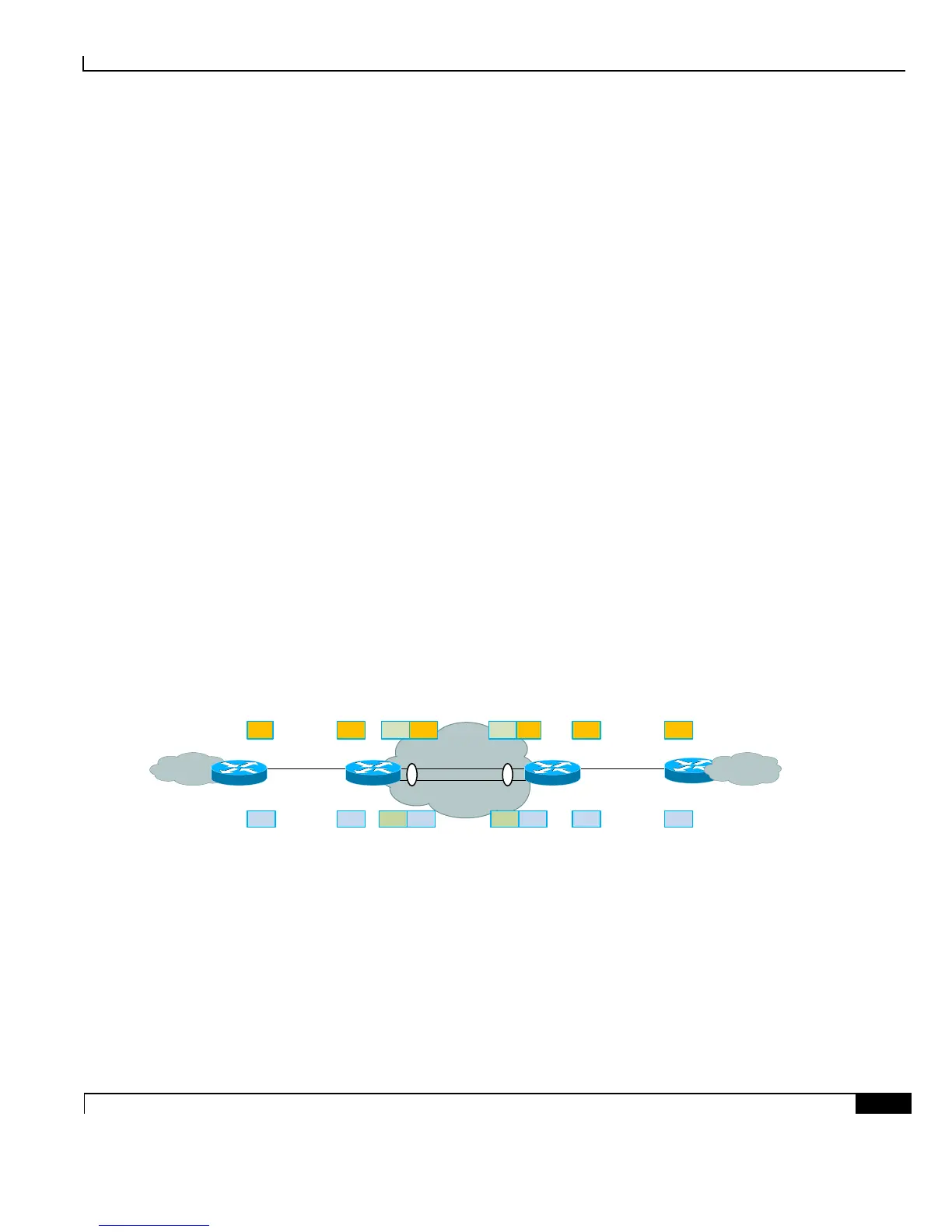Cisco ASR 903 Router Design and Deployment Guide▄
Three modes are supported on the Cisco ASR 903 router.
• LACP—channel-group 1 mode { active | passive}
• On—channel-group 1
On mode will force member link into port-channel whether other end joins or not. On mode is not recommended
as traffic can be black holed if the peering end does not join port-channel. Here is the command to force interface
into port-channel.
interface GigabitEthernet0/0/1
no ip address
negotiation auto
channel-group 5 ! using on mode
Load-balancing can be achieved based on MAC address or IP address of source and destination packets. Port-
channel load balancing can be configured globally for all the port-channels; individual port channel load balancing
command is not supported. Here are the commands to configure port-channel load balancing.
Configure terminal
port-channel load-balance-hash-algo {option}
dst-ip Destination IP
dst-mac Destination MAC
src-dst-ip Source XOR Destination IP Addr
src-dst-mac Source XOR Destination MAC
src-ip Source IP
src-mac Source MAC
In the example below, gig0/1/1 and gig0/1/2 is member of port-channel1.
Figure 4. Ethernet Port-Channel
ASR903-PE2
Gi0/1/2 Gi0/1/2
Gi0/1/0 Gi0/1/2Gi0/1/0Gi0/1/1
ASR903-PE1ASR903-CE1
Customer A
Site 1
ASR903-CE2
172.16.11.0/24 - SubnetB
172.16.11.0/24 – SubnetB
Customer A
Site 2
10 10 10
40 11
10 10
11 40 11
30
11 11 11
172.16.10.0/24 - SubnetA
172.16.10.0/24 – SubnetA
10 30
Gi0/1/1 Gi0/1/1
ASR903-PE1 and ASR903-PE2 Configuration
interface Port-channel1
no ip address
no negotiation auto
service instance 1 ethernet
encapsulation untagged
l2protocol peer ! l2protocol peering is needed for lacp if evc is configured
bridge-domain 1

